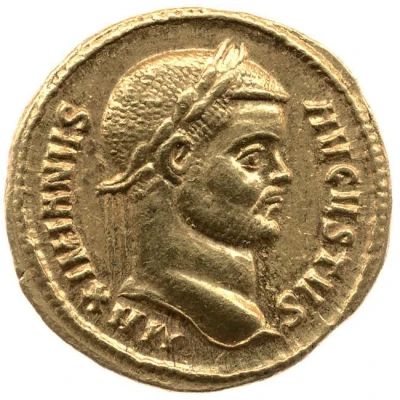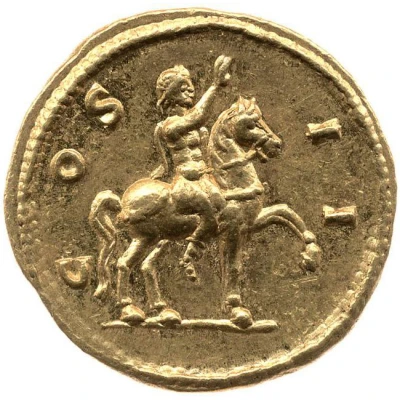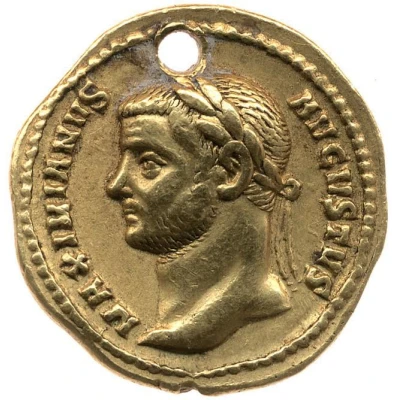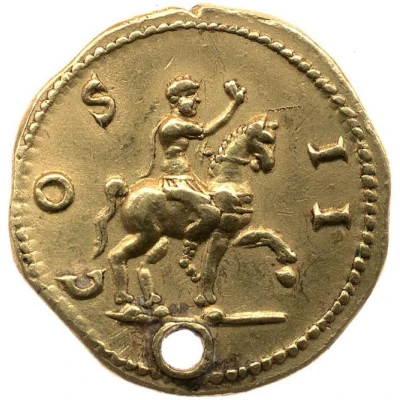


© Trustees of the British Museum
Aureus - Maximianus COS III
| Gold | 6.3 g | - |
| Issuer | Rome › Roman Empire (27 BC - 395 AD) |
|---|---|
| Emperor | Maximian Herculius (Marcus Aurelius Valerius Maximianus) (286-305) Diocletian (Gaius Aurelius Valerius Diocletianus) (284-305) |
| Type | Standard circulation coin |
| Years | 288-289 |
| Value | Aureus (25⁄2) |
| Currency | Antoninianus, Reform of Caracalla (AD 215 – 301) |
| Composition | Gold |
| Weight | 6.3 g |
| Shape | Round (irregular) |
| Technique | Hammered |
| Demonetized | Yes |
| Updated | 2024-10-05 |
| Numista | N#306659 |
|---|---|
| Rarity index | 100% |
Reverse
Maximian, draped, cuirassed, riding right, spearing fallen enemy.
Script: Latin
Lettering: COS III
Translation:
Consul Tertium.
Consul for the third time.
Comment
Mass varies: 5.33–7.23 g;Example of this type:
Trustees of the British Museum
Source:
Online Coins of the Roman Empire (OCRE)
Interesting fact
The Aureus - Maximianus (COS III) (288-289) coin was part of a series of coins issued by the Roman Empire during the reign of Emperor Maximianus (also known as Maximian), who ruled from 286 to 305 AD. This coin was minted in Rome and features an image of the emperor on one side and the goddess Victory on the other. The coin was made of gold and weighed 6.3 grams, which was a significant amount of gold at the time. Interestingly, the coin was issued during a time of economic and political turmoil in the Roman Empire. The empire was facing challenges from external threats, such as the Persians, and was also dealing with internal conflicts, including corruption and political instability. Despite these challenges, the Roman Empire continued to issue coins like the Aureus - Maximianus (COS III) (288-289), which were used as a symbol of the empire's power and wealth. Overall, the Aureus - Maximianus (COS III) (288-289) coin is a fascinating piece of history that provides insight into the economic and political climate of the Roman Empire during the late 3rd century AD.

